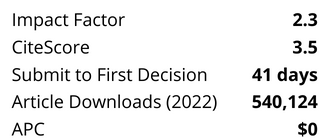The virulence factor concept has been a powerful engine in driving research and the intellectual flow in the fields of microbial pathogenesis and infectious diseases. This review analyzes virulence factors from the viewpoint of the damage–response framework of microbial pathogenesis, which defines virulence factor as microbial components that can damage a susceptible host. At a practical level, the finding that effective immune responses often target virulence factors provides a roadmap for future vaccine design. However, there are significant limitations to this concept, which are rooted in the inability to define virulence and virulence factors in the absence of host factors and the host response. In fact, this concept appears to work best for certain types of bacterial pathogens, being less well suited for viruses and commensal organisms with pathogenic potential.
Skip Nav Destination
Article navigation
Research Article|
August 01 2009
Virulence factors and their mechanisms of action: the view from a damage–response framework
Arturo Casadevall;
1Division of Infectious Diseases, Department of Medicine and the Department of Microbiology and Immunology of the Albert Einstein College of Medicine, 1300 Morris Park Avenue, Bronx NY, 10461, USA
Tel.: +1 718 430 2215 Fax: +1 718 430 8968; E-mail: casadeva@aecom.yu.edu
Search for other works by this author on:
Liise-anne Pirofski
Liise-anne Pirofski
1Division of Infectious Diseases, Department of Medicine and the Department of Microbiology and Immunology of the Albert Einstein College of Medicine, 1300 Morris Park Avenue, Bronx NY, 10461, USA
Search for other works by this author on:
J Water Health (2009) 7 (S1): S2–S18.
Citation
Arturo Casadevall, Liise-anne Pirofski; Virulence factors and their mechanisms of action: the view from a damage–response framework. J Water Health 1 August 2009; 7 (S1): S2–S18. doi: https://doi.org/10.2166/wh.2009.036
Download citation file:





%20cropped.png?versionId=5950)